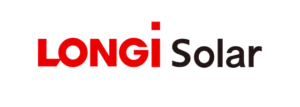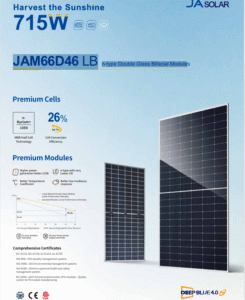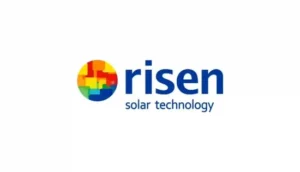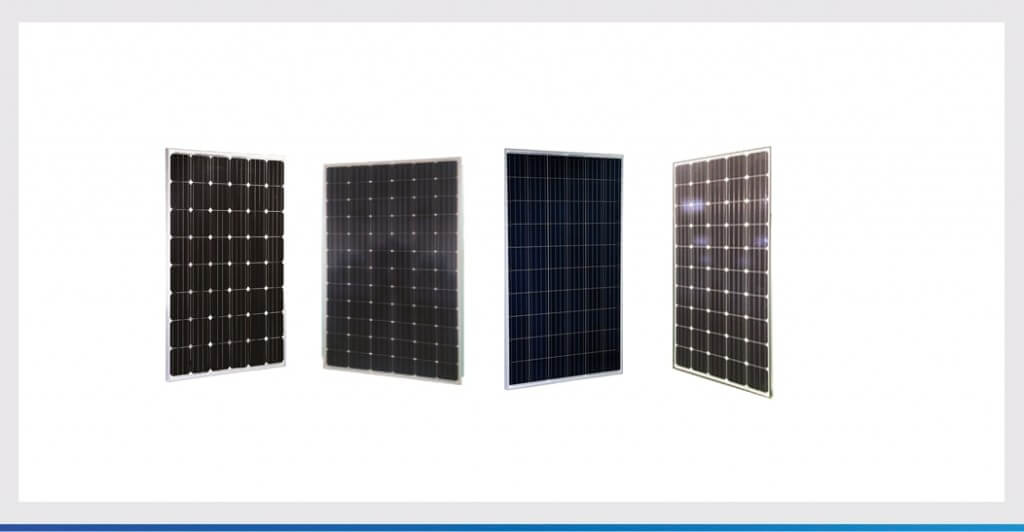Best Solar Panel In Pakistan
In Pakistan, more people want solar panels in pakistan because electricity prices are going up and power cuts happen often. The top solar panels in Pakistan are chosen based on how well they work, how long they last, their cost, and the reputation of the brand. Here are some of the best solar panel brands in Pakistan for 2025:
There are many solar panels in Pakistan from various brands, but we focus on the top 10 best solar panels (580 watts). Pak Solar Traders is a leading solar solution provider in Pakistan, offering Longi 580-watt solar panels at a reasonable price. This way, you can manage the electricity use in your home, office, or factory without worrying about power cuts or outages.
Top 10 solar panel brands in Pakistan for 2025, based on efficiency, reliability, pricing, and market reputation:
1. Longi Solar
 In addition, LONGi takes the solar photovoltaic industry to new heights with product innovations. And an optimized energy cost ratio with cutting-edge monocrystalline technologies. LONGi annually supplies more than 30 GW of high-efficiency wafers and solar modules worldwide. About a quarter of the world market demand. Moreover, LONGi is recognizing as the world’s most valuable solar technology company with the highest market value. Innovation and sustainable development are two of LONGi’s core values.
In addition, LONGi takes the solar photovoltaic industry to new heights with product innovations. And an optimized energy cost ratio with cutting-edge monocrystalline technologies. LONGi annually supplies more than 30 GW of high-efficiency wafers and solar modules worldwide. About a quarter of the world market demand. Moreover, LONGi is recognizing as the world’s most valuable solar technology company with the highest market value. Innovation and sustainable development are two of LONGi’s core values.
Longi Solar Panels (Himo 6) 570 watt
-
Type: Monocrystalline
-
Efficiency: Up to 22.3%-26%
-
Pros: High efficiency, excellent performance in heat, strong warranty.
-
Best for: Residential & commercial use.
- Himo X10 Solar Panels | Himo7 solar panels . | Himo6x solar panels. | Himo 5 solar panels.
2. Jinko Solar
-
 Type: Mono PERC
Type: Mono PERC -
Efficiency: Up to 21.6%
-
Pros: Affordable, reliable, good temperature resistance.
-
Best for: Budget-conscious buyers.
- Jinko 720 watt | Jinko 585 watt solar panels | Jinko 400 watt Solar panels | Jinko 435 watt
3. Canadian Solar
 Canadian Solar Inc. was founded in 2001 in Canada and is one of the world’s largest solar technology and renewable energy companies. It is a leading manufacturer of solar photovoltaic modules, provider of solar energy and battery energy storage solutions, and developer of utility-scale solar power and battery energy storage projects. Canadian Solar is one of the most bankable companies in the solar and renewable energy industry, having been publicly listed on the NASDAQ since 2006. Over the past 24years, Canadian Solar has successfully delivered over 15 GW of premium quality, solar photovoltaic modules to customers. Since entering the project development business in 2010, Canadian Solar has developed, built, and connected over 12 GWp of solar power projects and 6 GWh of battery energy storage projects across the world.
Canadian Solar Inc. was founded in 2001 in Canada and is one of the world’s largest solar technology and renewable energy companies. It is a leading manufacturer of solar photovoltaic modules, provider of solar energy and battery energy storage solutions, and developer of utility-scale solar power and battery energy storage projects. Canadian Solar is one of the most bankable companies in the solar and renewable energy industry, having been publicly listed on the NASDAQ since 2006. Over the past 24years, Canadian Solar has successfully delivered over 15 GW of premium quality, solar photovoltaic modules to customers. Since entering the project development business in 2010, Canadian Solar has developed, built, and connected over 12 GWp of solar power projects and 6 GWh of battery energy storage projects across the world.
-
Type: Mono & Polycrystalline
-
Efficiency: Up to 21.4%
-
Pros: Durable, strong after-sales support, good for Pakistan’s climate.
-
Best for: Long-term investments.
- Canadian 705 Watt Solar Panel | Canadian 650 watt Solar panel | Canadian 630 Watt Solar Panel | Canadian 585 Watt |
4. JA Solar
 JA Solar manufactured in 2005. The company’s business includes everything from silicon wafers, sales, and modules to electrical system completion. Therefore, it is based on continuous technological innovation, global sales and customer service network. Additionally, JA Solar has received recognition from the Industry High-Performance Photovoltaic Products Association.
JA Solar manufactured in 2005. The company’s business includes everything from silicon wafers, sales, and modules to electrical system completion. Therefore, it is based on continuous technological innovation, global sales and customer service network. Additionally, JA Solar has received recognition from the Industry High-Performance Photovoltaic Products Association.
-
Type: Mono PERC
-
Efficiency: Up to 21.3%
-
Pros: Strong low-light performance, PID-resistant.
-
Best for: Areas with frequent cloudy weather.
- JA710 Watt Solar | JA 605 watt Solar | JA 585 Solar watt| JA 580 watt |
5. Trina Solar
Trinasolar 210 Vertex Super Factory
The 210 Vertex Super Factory is home to the intelligent manufacturing of modules and the application of advanced technologies that are compatible with 210mm large-size wafers.
From full automation to top-class tech innovation, Trinasolar further leverages module efficiency and reliability to bring greater customer value.
Are Trina Solar Panels Any good??
Is there a 650 watt solar panel?
What is the highest wattage solar panel you can buy?
Is DIY solar right for me?
Save Time & Money
Look at solar panels from major brands like Longi Solar, SolarWorld, Canadian Solar, Jinko Solar, and more. However, Panels sold straight from our distribution centre in Lahore, Karachi and Islamabad.
580W+ Ultra-high Power with 21% High Efficiency
Reliable and Smart Solar
600W+/580W+/585W+ Ultra-high Power Modules
Based on Trina Solar’s leading multi-technology, the Vertex modules adopt the 210mm silicon wafer, non-destructive cutting and high-density interconnect technologies. By virtue of low-voltage and higher module string power output. The new Vertex series unlocks huge potential for further reducing balance-of-system costs.
Also, a variety of modules and solutions to fit your solar project needs. A variety of modules and solutions to fit your solar project needs
-
Type: Vertex Series (Mono)
-
Efficiency: Up to 21.6%
-
Pros: High durability, good warranty, widely available.
-
Best for: Commercial solar farms.
6. Risen Energy
 Founded in 1986, Risen Energy is a distinguished Tier-1 solar module manufacturer and PV solutions provider, publicly listed on China’s Shenzhen Stock Exchange (Stock Code: 300118). With a global reach, the company has 22 global sales service centres and boasts a workforce of over 11,000 employees worldwide.
Founded in 1986, Risen Energy is a distinguished Tier-1 solar module manufacturer and PV solutions provider, publicly listed on China’s Shenzhen Stock Exchange (Stock Code: 300118). With a global reach, the company has 22 global sales service centres and boasts a workforce of over 11,000 employees worldwide.
-
Type: Mono PERC
-
Efficiency: Up to 21%
-
Pros: Affordable, good efficiency, reliable.
-
Best for: Residential projects.
7. Inverex Solar (Jolly wood Solar panels)
-
Type: Jolly wood Solar
-
Efficiency: Up to 22.3%
-
Pros: High-end, excellent heat resistance.
-
Best for: High-end residential & industrial.
8. AIKO N Type Solar panel

of photovoltaic cells and continuously accelerates technological innovation to maximize value for our customers.
AIKO’s mass-produced N-Type ABC bifacial PV modules have set a new world record for commercial module efficiency at 24.6%, consistently delivering high-power,
high-yield, and ultra-safe N-type ABC modules to our customers.
-
Type: Monocrystalline
- Pros: Best efficiency, long lifespan (40+ years).
-
Cons: Expensive.
-
Best for: Those willing to pay for top-tier performance.
9. Yingli Solar
Currently, Yingli’s products and services are distributed across more than 150 countries and regions worldwide, with the product quality widely recognized by customers and authoritative third-party organizations. The company has successively been honored with awards such as the “Top Performer” module manufacturer by PVEL, the “Overall Best Performance” award by RETC, and the “Photovoltaic Consumer Choice Award” by EUPD.
-
Type: Mono PERC
-
Efficiency: Up to 20.5%
-
Pros: Good balance of price and performance.
-
Best for: Small to medium installations.
10. Tesla Solar
-
Type: Mono & Poly
-
Efficiency: Up to 19.5%
-
Pros: Local support, decent performance.
-
Cons: Slightly lower efficiency than Tier-1 brands.
-
Best for: Buyers preferring local warranties
In addition, LONGi takes the solar photovoltaic industry to new heights with product innovations. And an optimized energy cost ratio with cutting-edge monocrystalline technologies. LONGi annually supplies more than 30 GW of high-efficiency wafers and solar modules worldwide. About a quarter of the world market demand. Moreover, LONGi is recognizing as the world’s most valuable solar technology company with the highest market value. Innovation and sustainable development are two of LONGi’s core values.
- Buy Canadian Solar Panels In PakistanSolar Panels in PakistanSolar panel electrical connections are made in series to achieve a desired output voltageCanadian Solar Panel 580 watt Mono Perc

- Mono PERC Half-Cell Module
- 5 busbar solar cell adopts new technology to improve the efficiency of modules , offers a better aesthetic appearance, making it perfect for rooftop installation
- Higher module conversion efficiency (up to 19.88%) benefit from half cell structure (low resistance characteristic)

JA Solar manufactured in 2005. The company’s business includes everything from silicon wafers, sales, and modules to electrical system completion. Therefore, it is based on continuous technological innovation, global sales and customer service network. Additionally, JA Solar has received recognition from the Industry High-Performance Photovoltaic Products Association.
JA 580 Watt solar panel | JA mono Perc 580 Watt Solar Panel
Are Trina Solar Panels Any good??
Is there a 650 watt solar panel?
What is the highest wattage solar panel you can buy?
Is DIY solar right for me?
Save Time & Money
Look at solar panels from major brands like Longi Solar, SolarWorld, Canadian Solar, Jinko Solar, and more. However, Panels sold straight from our distribution centre in Lahore, Karachi and Islamabad.
600W+/580W+/585W+ Ultra-high Power Modules
Based on Trina Solar’s leading multi-technology, the Vertex modules adopt the 210mm silicon wafer, non-destructive cutting and high-density interconnect technologies. By virtue of low-voltage and higher module string power output. The new Vertex series unlocks huge potential for further reducing balance-of-system costs. Also, a variety of modules and solutions to fit your solar project needs. A variety of modules and solutions to fit your solar project needs
Conclusion
Solar panels are a sustainable, cost-effective solution for generating clean energy. With advancements in technology, they are becoming more efficient and affordable, playing a crucial role in the global shift toward renewable energy.
For More Details Contact us on 0304-1111-988 Also Follow our Facebook Page Click Here




